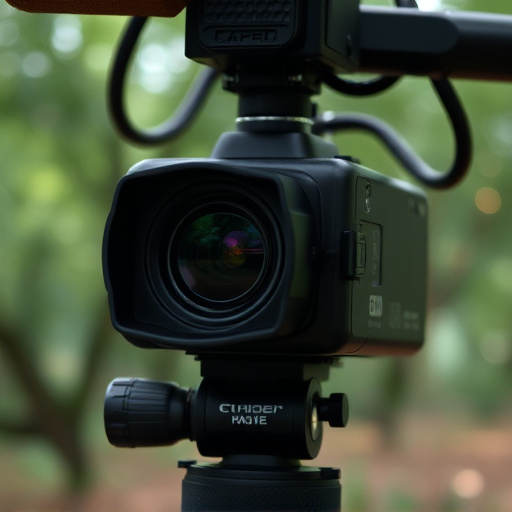Invisible IR cameras, integrated into everyday objects like light bulbs and door handles, offer advanced home monitoring in complete darkness with undetectable technology. While these discreet devices enhance security, they raise ethical concerns regarding privacy and potential abuse due to their hidden placement and extensive data collection capabilities, requiring a balance between innovation and individual privacy rights.
“Unveiling the hidden world of home security, we explore the rise of miniature surveillance devices disguised as everyday objects. From smart lights to seemingly innocuous kitchen appliances, these invisible IR cameras offer advanced home monitoring capabilities. This article delves into the technology behind these unassuming eyes, examining their seamless integration into domestic spaces and the ethical dilemmas they present. As home automation evolves, understanding the balance between convenience and privacy is crucial.”
- Understanding Invisible IR Cameras: Unveiling the Technology
- Integrating Surveillance into Everyday Home Objects
- Ethical Considerations and Privacy Concerns with Miniature Devices
Understanding Invisible IR Cameras: Unveiling the Technology
Invisible IR cameras are a cutting-edge technology in home monitoring, offering discreet and advanced surveillance solutions. These miniature devices utilize infrared (IR) light to capture images and video in conditions where visible light cameras struggle—such as low-light environments or complete darkness. IR technology emits an invisible spectrum of light that is undetectable to the human eye but can be easily interpreted by specialized sensors within the camera.
By harnessing the power of IR, these cameras provide enhanced visibility and security for homeowners. They are often built into everyday objects like light bulbs, thermostats, or even decorative items, making them virtually invisible yet highly effective surveillance tools. The advanced IR sensors enable clear image capture, ensuring that critical moments are recorded with remarkable detail, even in the absence of visible light. This innovative approach to home monitoring guarantees peace of mind while maintaining an unintrusive presence within the household.
Integrating Surveillance into Everyday Home Objects
In today’s digital era, the concept of integrating surveillance technology into everyday home objects is becoming increasingly prevalent. Manufacturers are designing and producing a range of miniature surveillance devices that seamlessly blend with common household items, offering homeowners an advanced level of home monitoring. These innovative gadgets often include features such as Invisible IR Cameras, allowing for discreet observation without compromising aesthetics. From smart lamps with built-in cameras to subtle door handles with surveillance capabilities, these objects provide a new dimension to home security and comfort.
By incorporating these tiny yet powerful tools into everyday items, homeowners can gain peace of mind while maintaining an unassuming environment. The Invisible IR Camera technology ensures that the devices remain hidden from view, capturing high-quality footage without raising suspicion. This subtle approach to home monitoring appeals to those seeking a discreet solution for enhancing their living spaces and safeguarding their loved ones.
Ethical Considerations and Privacy Concerns with Miniature Devices
The integration of miniature surveillance devices into everyday home objects raises significant ethical considerations and privacy concerns. As technology advances, invisible IR cameras hidden in seemingly innocuous items can capture and transmit data, creating a constant stream of personal information. While proponents argue that these devices enhance home monitoring and security, critics highlight the potential for abuse and invasion of privacy.
The small size of miniature surveillance devices makes them easily concealable, allowing them to operate discreetly within domestic settings. This secrecy can be unsettling for residents, as it erodes trust in both individuals and institutions. Furthermore, the vast amount of data collected by these devices could lead to the misuse or unauthorized access of personal information, raising serious ethical red flags. It is crucial to strike a balance between technological innovation and individual privacy rights, ensuring that the benefits of home monitoring do not come at the expense of citizens’ right to privacy.
As we’ve explored, invisible IR cameras integrated into everyday home objects represent a significant advancement in home monitoring. Their miniature size allows for discreet placement, enhancing security without compromising aesthetics. However, it’s crucial to address the ethical and privacy concerns that arise with such technology. Responsible deployment, clear consumer education, and robust regulatory frameworks are essential to ensure these innovations serve as tools for safety and peace of mind, rather than invasions of privacy. By balancing convenience and autonomy, we can harness the potential of invisible IR cameras while safeguarding our most personal spaces.
